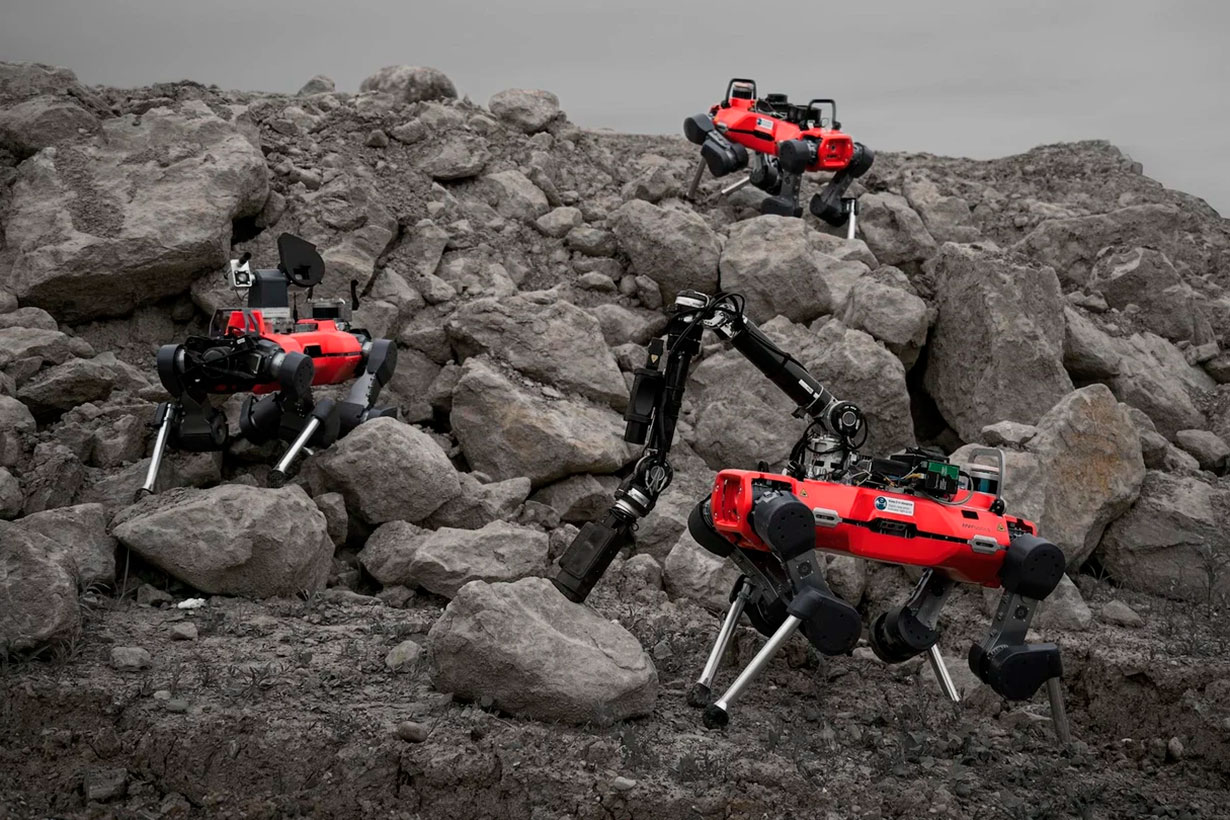CLOSE
About Elements
TANAKA is a leading company in the field of precious metals.
Advanced materials and solutions that support societal progress, the development stories behind them, the voices of engineers, and our management philosophy and vision—
Elements is an online media platform that shares insights that lead to a better society and a more prosperous future for the planet under the slogan “Mastering Precious Metals.”

Four-legged dog robots could one day explore the moon

Teams of quadruped robots could one day prove vital to lunar mining.
Image Credit: ETH ZURICH / TAKAHIRO MIKI
Humans are going to need a lot of supplies if they hope to establish a permanent lunar base on the moon—an incredibly expensive logistical hurdle to clear. While return missions can hypothetically restock a great deal of the astronauts’ needs, it would be a lot cheaper and easier to harvest at least some of the necessary materials right there for base construction and repair projects. Of course, doing so will require serious teamwork to pull off—a team that could one day include packs of four-legged robots.
According to a study published on Wednesday in Science Robotics, researchers at Switzerland’s ETH Zurich university recently oversaw a series of outdoor excursions for a trio of modified quadruped ANYmal robots. Researchers tested their team on a variety of terrains across Switzerland and at the European Space Resources Innovation Centre (ESRIC) in Luxembourg.
[Related: NASA could build a future lunar base from 3D-printed moon-dust bricks.]
Engineers at ETH Zurich worked alongside the Universities of Basel, Bern, and Zurich to program each ANYmal with specific lunar tasks: One was taught to utilize a microscopy camera alongside a spectrometer to identify varieties of rock, while another focused on using cameras and a laser scanner to map and classify its surrounding landscape. Finally, a third robot could both identify rocks and map its surroundings—albeit less precisely for each task than either of its companions.
“Using multiple robots has two advantages,” doctoral student and researcher Philip Arm explains. “The individual robots can take on specialized tasks and perform them simultaneously. Moreover, thanks to its redundancy, a robot team is able to compensate for a teammate’s failure.” Because of their overlaps, a mission could still be completed even if one of the three robots breaks down during its duties.
The team’s redundancy-focused explorers even won an ESRIC and ESA Space Resources Challenge, which tasked competitors with locating and identifying minerals placed throughout a test area modeled after the lunar surface. In taking first place, the jury provided another year of funding to expand both their number and variety of robots. Researchers say future iterations of the lunar exploration team could include both wheeled and flying units. Although all of the robots’ tasks and maneuvers are currently directly controlled by human inputs, the researchers also hope to eventually upgrade their explorers to be semi-autonomous.
This article was written by Andrew Paul from Popular Science and was legally licensed through the Industry Dive Content Marketplace. Please direct all licensing questions to legal@industrydive.com.
![]()







